Hybrid technology could make Star Trek-style tricorder a reality
Scientists at the University of Southampton are aiming to develop a handheld testing device to provide same day diagnosis from a patient's bedside.
Apr 8th, 2014
Read more
Scientists at the University of Southampton are aiming to develop a handheld testing device to provide same day diagnosis from a patient's bedside.
Apr 8th, 2014
Read more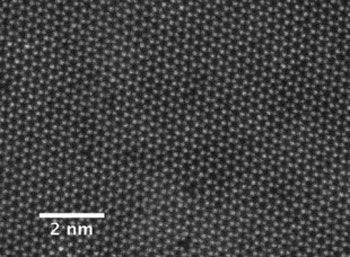 Researchers have unveiled a potentially scalable method for making one-atom-thick layers of molybdenum diselenide - a highly sought semiconductor that is similar to graphene but has better properties for making certain electronic devices like switchable transistors and light-emitting diodes.
Researchers have unveiled a potentially scalable method for making one-atom-thick layers of molybdenum diselenide - a highly sought semiconductor that is similar to graphene but has better properties for making certain electronic devices like switchable transistors and light-emitting diodes.
Apr 8th, 2014
Read more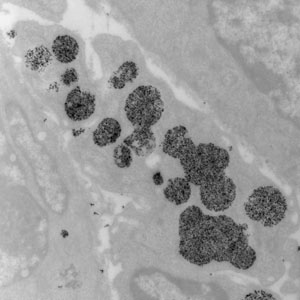 This evolving treatment approach involves the injection of nanoparticles into the tumor, which are then activated with magnetic energy. Once activated the nanoparticles produce heat inside the cancer cell. The heat kills the cancer cell with minimal damage to surrounding tissue.
This evolving treatment approach involves the injection of nanoparticles into the tumor, which are then activated with magnetic energy. Once activated the nanoparticles produce heat inside the cancer cell. The heat kills the cancer cell with minimal damage to surrounding tissue.
Apr 8th, 2014
Read moreA new theoretical study shows the conductivity conditions under which graphene nanoribbons can become switches in externally controlled electronic devices.
Apr 8th, 2014
Read more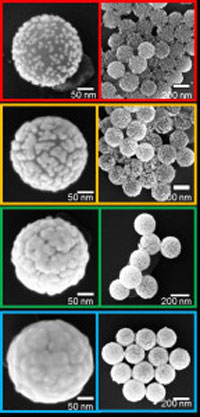 Forscher beobachten die Entstehung einer goldenen Nanohuelle um kleine Glaskugel - Grundlage f�r gezielte Partikelherstellung.
Forscher beobachten die Entstehung einer goldenen Nanohuelle um kleine Glaskugel - Grundlage f�r gezielte Partikelherstellung.
Apr 8th, 2014
Read moreBladder cancer cells overexpress the protein EGFR; gold nanorods can be engineered to attach to EGFR proteins; and then the application of low-intensity laser to the tissue can preferentially heat these gold nanorods, killing the EGFR-rich cancer cells to which they are attached.
Apr 8th, 2014
Read more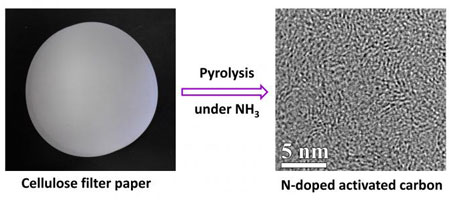 Chemists have found that cellulose - the most abundant organic polymer on Earth and a key component of trees - can be heated in a furnace in the presence of ammonia, and turned into the building blocks for supercapacitors.
Chemists have found that cellulose - the most abundant organic polymer on Earth and a key component of trees - can be heated in a furnace in the presence of ammonia, and turned into the building blocks for supercapacitors.
Apr 7th, 2014
Read more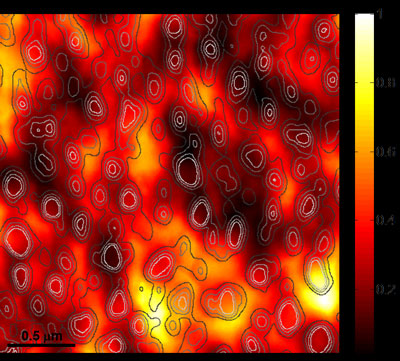 Researchers have measured how irregularly distributed silver particles influence the absorption of light. They demonstrated that nanoparticles interact with one another via their electromagnetic near-fields, so that local 'hot spots' arise where light is concentrated especially strongly.
Researchers have measured how irregularly distributed silver particles influence the absorption of light. They demonstrated that nanoparticles interact with one another via their electromagnetic near-fields, so that local 'hot spots' arise where light is concentrated especially strongly.
Apr 7th, 2014
Read more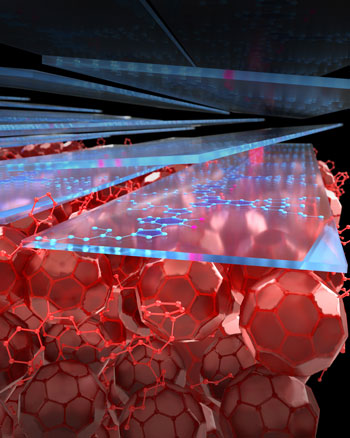 New research reveals that energy is transferred more efficiently inside of complex, three-dimensional organic solar cells when the donor molecules align face-on, rather than edge-on, relative to the acceptor. This finding may aid in the design and manufacture of more efficient and economically viable organic solar cell technology.
New research reveals that energy is transferred more efficiently inside of complex, three-dimensional organic solar cells when the donor molecules align face-on, rather than edge-on, relative to the acceptor. This finding may aid in the design and manufacture of more efficient and economically viable organic solar cell technology.
Apr 7th, 2014
Read more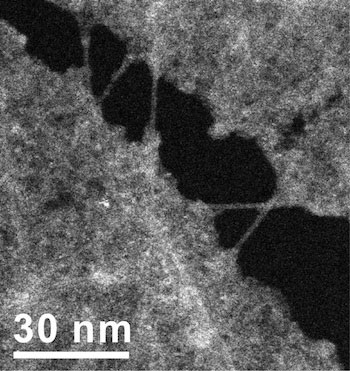 Carbon nanotubes are reinforcing bars that make two-dimensional graphene much easier to handle in a new hybrid nanomaterial.
Carbon nanotubes are reinforcing bars that make two-dimensional graphene much easier to handle in a new hybrid nanomaterial.
Apr 7th, 2014
Read moreResearchers have made a surprising discovery about the degradation of solar cells that could help pave the way to creating a longer lifetime for these cells.
Apr 7th, 2014
Read moreCIEL and European partners publish position paper on the regulation of nanomaterials at a meeting of EU competent authorities.
Apr 7th, 2014
Read moreResearchers are currently developing a novel microscopy technology for the direct detection of individual subunits of protein complexes in the cell membrane of intact cells. The methodology is applied to investigate a protein complex acting as a calcium channel in the cell membrane. The channel plays an important role in prostate cancer.
Apr 7th, 2014
Read moreThe German Social Accident Insurance (DGUV) has recently launched the Nanotechnology-Platform 'Safe handling of Nanomaterials'.
Apr 7th, 2014
Read moreThe new method synthesizes large-area graphene into a single crystal on a semiconductor, maintaining its electric and mechanical properties. The new method repeatedly synthesizes single crystal graphene on the current semiconductor wafer scale.
Apr 7th, 2014
Read more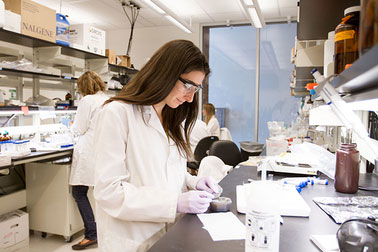 Arizona State University researchers will lead a multi-university project to aid industry in understanding and predicting the potential health and environmental risks from nanomaterials.
Arizona State University researchers will lead a multi-university project to aid industry in understanding and predicting the potential health and environmental risks from nanomaterials.
Apr 6th, 2014
Read more